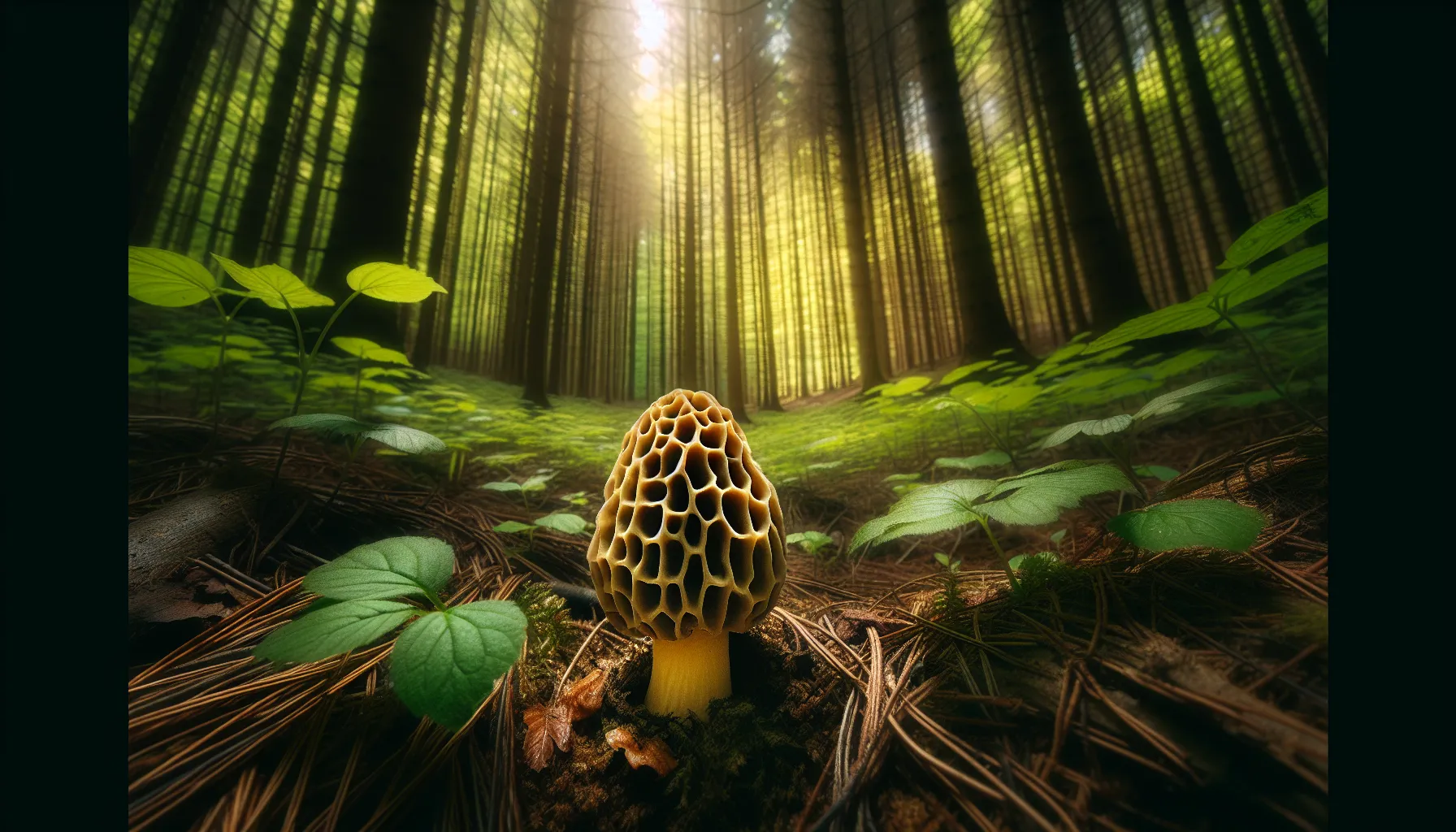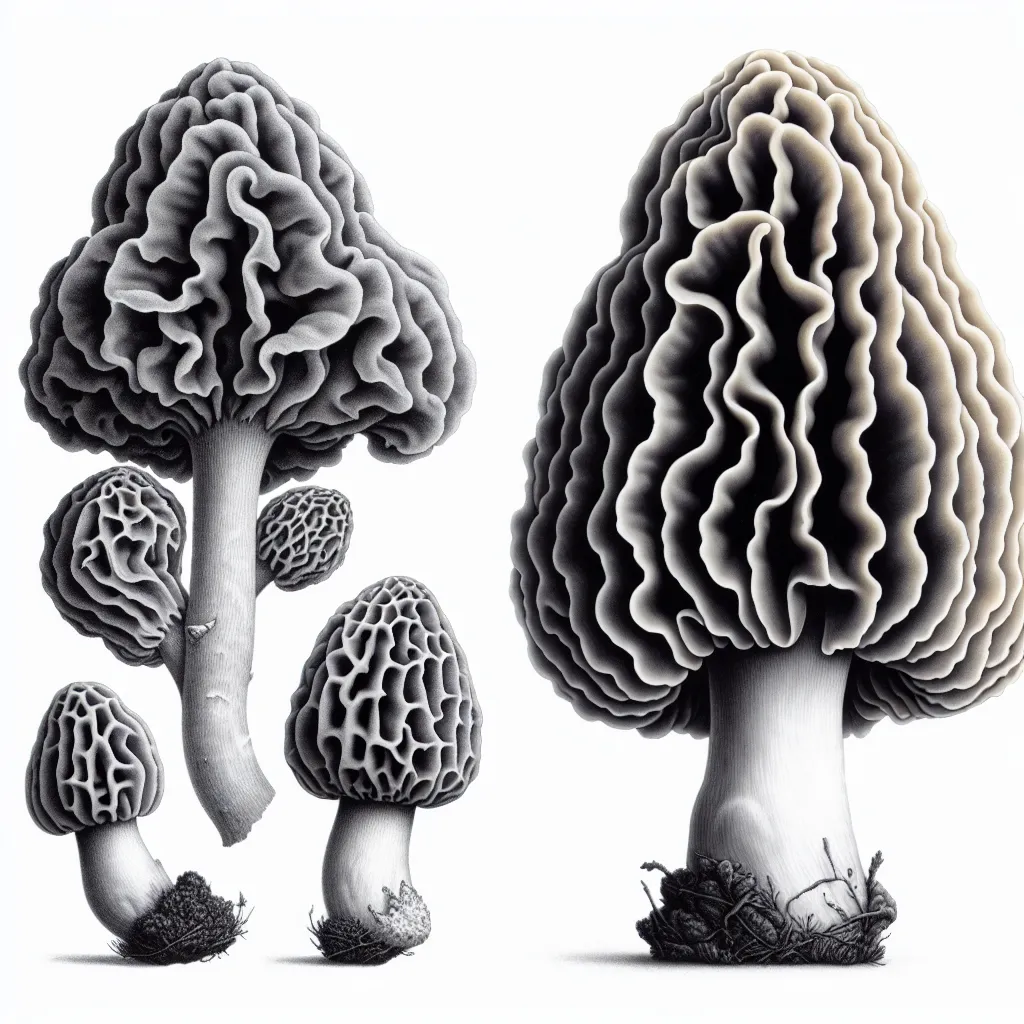Mushroom foraging can be a delightful pastime, offering foragers the chance to connect with nature and harvest some of the forest’s most delectable gifts. Among the various types of mushrooms, morels rank as one of the most sought-after for their unique flavor and culinary value. However, the excitement of the hunt must be tempered with caution due to the existence of false morels, which can be toxic. This article will guide you through distinguishing between true morels and their potentially dangerous “look-alikes”.
Understanding Morels and False Morels
The Allure of True Morels
True morels (genus Morchella) are cherished by chefs and food lovers for their earthy and nutty flavors. These fungi typically appear in the spring across North America, growing under hardwood trees like ash and elms. Their distinctive honeycomb-like appearance, with pits and ridges, makes them a target for foragers.

The Risk of False Morels
While true morels are a safe and prized find when properly cooked, false morels present a significant risk. These mushrooms, while related to true morels, can contain harmful toxins. The most concerning species are Gyromitra esculenta and Gyromitra ambigua. While some false morel species are considered edible after cooking in certain parts of Europe, it’s widely advised to avoid consuming any false morels due to potential long-term health risks.

Identifying True Morels vs. False Morels
When foraging for morels, it is crucial to be able to distinguish them from their toxic counterparts. Here are five key differences to help you identify true morels from false morels:
1. Examine the Cap Texture
True morels have a distinctive honeycomb pattern with pits and ridges. In contrast, false morels will have caps that appear wavy or folded, lacking the uniform pattern of true morels.
2. Check for Hollow Caps
Upon cutting a true morel in half, you’ll find it completely hollow inside. This feature is a reliable indicator of a true morel. False morels, however, may contain cottony fibers or be solid inside.
3. Observe the Stem Connection
In true morels, the stem attaches at or near the bottom of the cap. False morels have a different structure, with the stem attaching at the top of the cap, giving it a skirt-like appearance.
4. Assess Symmetry
True morels usually have a symmetrical shape, whereas false morels often have an irregular, asymmetrical form with bulges and folds that may make them look as though they’ve been stepped on.
5. Conduct a Spore Test
A spore print can be a definitive method to tell them apart. True morels have light, cream-colored spores, while false morels have dark, almost black spores. To perform a spore test, place a mushroom on a piece of paper, cover it, and after a few hours, the spore print will reveal the mushroom’s identity.
Safety and Foraging Tips
When foraging for morels, it’s important to prioritize safety:
- Consult an Expert: Before consuming any wild mushrooms, especially if you’re new to foraging, seek guidance from an expert. The North American Mycological Association (NAMA) offers resources and local chapter information to help you connect with knowledgeable foragers.
- Use a Field Guide: Carry a reputable field guide to help with identification. While some popular guides may be out of print, they can often be found used online. Two recommended guides include the Peterson Field Guide to Mushrooms of North America and the National Audubon Society Field Guide to North American Mushrooms.
- Never Eat Raw Mushrooms: Both true and false morels can cause stomach upset if eaten raw. Always cook morels thoroughly before consuming them.
Further Learning and Resources
For those interested in deepening their knowledge of mushroom foraging, consider exploring additional resources:
- Mushrooming Without Fear: This beginner’s guide offers practical advice for collecting safe and delicious mushrooms.
- How to Find Morel Mushrooms: This article provides insights and tips on locating morels in the wild.
- Mushroom Foraging — The Ultimate Guide: An extensive guide on foraging techniques and safety.
Conclusion
Foraging for morels can be a rewarding experience, allowing you to enjoy one of nature’s culinary delights. By learning to differentiate between true and false morels and following safe foraging practices, you can enjoy the bounty of the forest without the risks. Remember, the key to safe mushroom foraging is knowledge, caution, and respect for the natural world.
